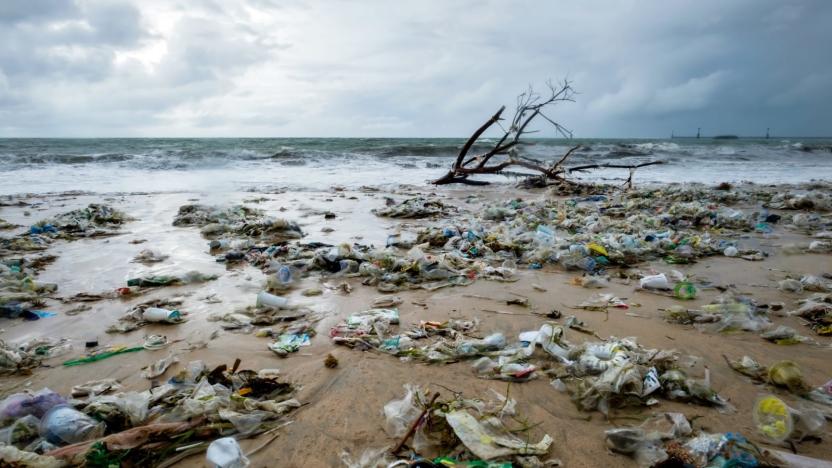US department of energy
Latest

New plastic material can be recycled again and again
We're drowning in plastics. That's why the world's brightest minds are trying to find a way we can effectively deal with plastic waste and make sure we don't add more in the coming years. Now, researchers from the US Department of Energy's (DOE) Lawrence Berkeley National Laboratory have created a plastic material that's fully recyclable. It's called poly(diketoenamine) or PDK, and it can be disassembled at a molecular level and then reassembled into another object with a different texture, color and shape again and again "without loss of performance or quality."

Diamond hones DOE X-ray laser howitzer to razor-sharp precision
The US Department of Energy's SLAC accelerator lab already has a pretty useful X-ray laser -- the Linac Coherent Light Source (LCLS). But, recent modifications to the device have scientists drooling over its new found potential. Using a thin wafer of diamond, the Stanford-run lab filtered the beam to a lone frequency, then amplified it in a process called "self-seeding." That's given the world's most powerful X-ray laser even more punch by tossing out unneeded wavelengths which were reducing its intensity. The tweaks allow scientists across many fields to finesse and image matter at the atomic level, giving them more power to study and change it. According to the lab, researchers who came to observe the experiment from other X-ray laser facilities "were grinning from ear to ear" at the possibility of integrating the tech into their own labs. The SLAC team claims they could still add 10 times more punch to the LCLS with further optimization, putting the laser in a class by itself -- X-ray-wise, anyway.

Goodyear's self-inflating tires could improve gas mileage, leave Schrader valves unsatisfied
Reminiscent of Ghostbuster's Marshmallow Man, new Goodyear tires might just Stay-Puft on their own. The company is developing Air Maintenance Technology (AMT) tires with built-in pumps to keep themselves at the perfect pressure. The reason? Even slightly under-inflated tires can drop your mileage by 3.3 percent, costing you cash at the pump. For highway-hustling commercial trucks that's a whole lot of moola, leading the US Department of Energy's Office of Vehicle Technology to grant Goodyear $1.5 million towards self-plumping commercial tire development. For those of us who don't wear mesh hats, Goodyear is working on a consumer version in its Luxembourg lab. It's unclear exactly how they will work, but earlier implementations have a pipe that's compressed as the tire rolls, allowing air to enter the tire without bursting thanks to a pressure sensitive valve. With so much automated car technology now all we need is the kind that cleans out its own trunk and pumps its own gas. Check out the full PR after the break.

Sprint nabs $7.3M grant for hydrogen fuel cells at cell sites
The US Department of Energy is feeling generous with some $41.9 million worth of cold, hard cash in a round of grants aimed at advancing fuel cell tech, and Sprint ended up scoring some $7.3 million of it -- the only carrier to do so. Carriers and hydrogen fuel cells don't seem like a natural fit at first, but it turns out that backup power at cell sites is kind of a big deal, and fuel cells are a perfect fit for a reliable, long-running, zero-emission solution. Interestingly, Sprint has been really into this for a while now -- it's their third awarded grant, and it turns out that they've had fuel cells deployed at sites since way back in 2005 (and they've even got 12 patents under their belt to prove it). Most current sites offer up to 15 hours of power in the event of an emergency using low-pressure hydrogen tanks, and the carrier says that it'll use the latest cash infusion to work with its partners to boost that up to 72 hours. Probably worse ways for the government to spend $7.3 million, when you think about it (say, on no-bid contracts for surplus eraser heads for Number 2 pencils, for instance).


